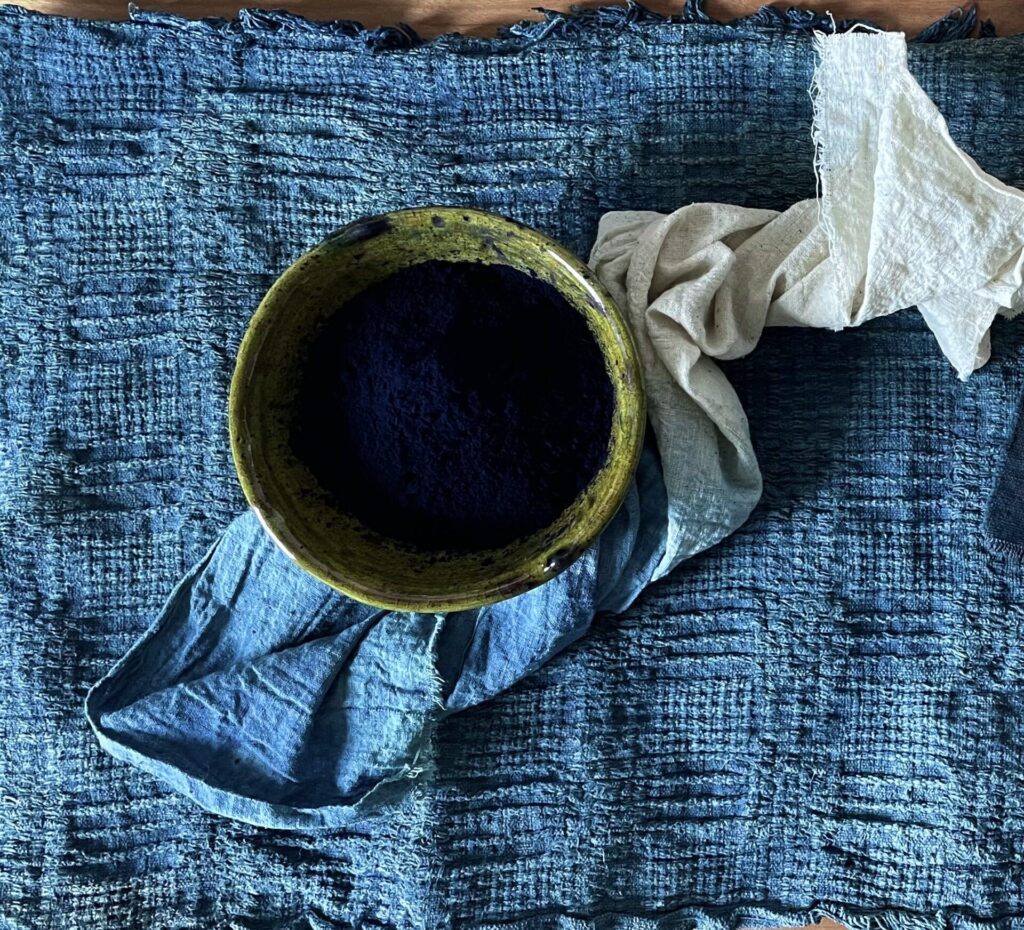
We get lots of emails from customers about challenges with dyeing and needing Botanical Colors’ President Kathy Hattori’s help. Why not share the learning so we can all benefit? From our inboxes to you, it’s simple: You Asked, Kathy Answered.
YOU ASKED: I started my indigo journey 🙂 and have a question. I tried looking through the blog first but couldn’t find this similar issue I’m having. I have an indigo 1-2-3 iron vat. My vat seems in okay condition — After stirring and letting the sediment settle, the color is light yellow/amber but when I dip my fabrics, they come out more blue then yellow-green.
I thought it might be okay but after several dips and after balancing the pH with a vinegar wash, I rinse and rinse but the water never really runs clear but blue. I feel like the indigo is just sitting on top! Does the vat need to be reduced??? Thank you so much!
KATHY ANSWERED: In regards to your question, if the shirt comes out of the vat already blue and doesn’t change color to a deeper blue, it sounds like it’s under-reduced. Normally, the color of the vat as you’ve described it should indicate a balanced vat but iron vats can be a little tricky. Try a little more iron and see if the fabric emerges from the vat a yellower shade and then oxidizes.
Another factor that might be affecting your vat is its age. The one thing about iron vats is that they dye super dark for a period of time and then they collapse. I’ve had a difficult time reviving them once they are spent, and the way we know this is that we see that the liquid can become very pale, grayish, clear and sometimes has these indigo “flakes” in them. The dips yield a strange colored blue, sometimes with dark speckles imbedded in the fabric. Not fun. Jim Liles says in his book that there is a secondary reaction with iron (ferrous) vats that consumes indigo, and I believe this is why the vat exhausts. If your vat is older, it might be on the verge of collapsing, and you can mix more of all the 1-2-3 ingredients and add it to the vat to see if it revives.
YOU ASKED: I am growing Japanese Indigo and would like to ferment a small amount to obtain a true blue. Can you give me an easy recipe. I have used the salt method as well as the blender but got an aqua color instead of true blue. Thanks for your help.
KATHY ANSWERED: The fresh leaf method you are referring to is the simplest recipe for Japanese indigo. The other method to obtain enough indigo for a reduction vat takes much more effort. You can extract the pigment from the leaves and make a paste, or you can dry and compost the leaves to make sukumo which takes over 100 days after harvest. Japanese sukumo fermentation usually takes a minimum of 7-10 kilos (approx. 15-22 lbs) of dried leaves to make enough for a small vat. Many dyers don’t grow this large of an amount, so they use the fresh leaf method that you tried.
There are other methods to get a true blue indigo shade by using Indigofera tinctoria, but they normally don’t involve a Japanese indigo patch. There are many indigo sellers, including ourselves, who sell indigofera tinctoria powder and you can make a 1-2-3 fructose reduction vat that will create a true blue.
You might be interested in the Video Recording: Intro to Fresh Leaf Indigo Dyeing – Blender, Salt & Tataki-Zome we just made live?
